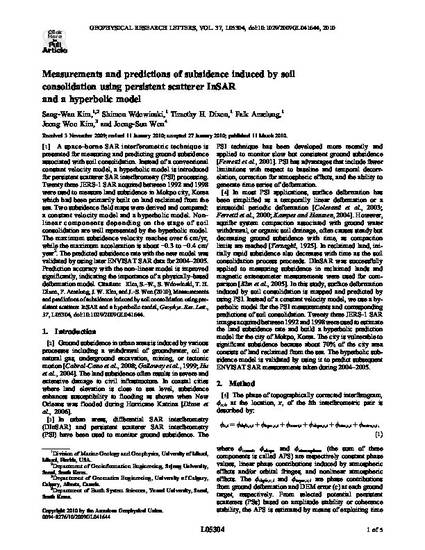
- subsidence,
- PSI,
- hyperbolic
A space-borne SAR interferometric technique is presented for measuring and predicting ground subsidence associated with soil consolidation. Instead of a conventional constant velocity model, a hyperbolic model is introduced for persistent scatterer SAR interferometry (PSI) processing. Twenty three JERS-1 SAR acquired between 1992 and 1998 were used to measure land subsidence in Mokpo city, Korea which had been primarily built on land reclaimed from the sea. Two subsidence field maps were derived and compared: a constant velocity model and a hyperbolic model. Non-linear components depending on the stage of soil consolidation are well represented by the hyperbolic model. The maximum subsidence velocity reaches over 6 cm/yr, while the maximum acceleration is about −0.3 to −0.4 cm/year2. The predicted subsidence rate with the new model was validated by using later ENVISAT SAR data for 2004–2005. Prediction accuracy with the non-linear model is improved significantly, indicating the importance of a physically-based deformation model.
Geophysical Research Letters, v. 37, issue 5, art. L05304
Copyright 2010 by the American Geophysical Union.
Available at: http://works.bepress.com/timothydixon/88/
